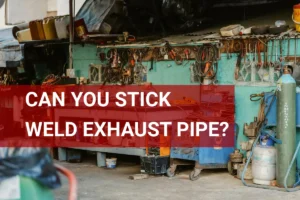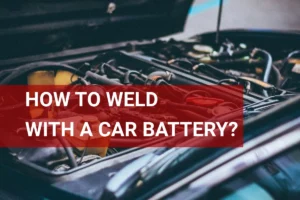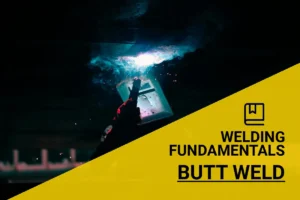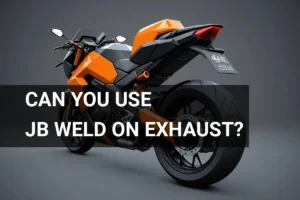What is a Pinch Weld? Understanding Its Function, Types, and Uses
Published on: June 23, 2025 | Last modified: March 4, 2025
By: Joe Carter
So, what is what is a pinch weld? It’s super important to understand this if you’re working on automotive repairs. From my experience, if you don’t get pinch welds right, it can lead to weak joints, causing structural issues in your car over time.
In this guide, you’ll learn about how a pinch weld works, its types, steps to perform pinch welding, factors affecting it, common problems, aftercare, applications, and some alternatives. We’ll also answer questions like what is a pinch weld on a car and what does a pinch weld look like.
Contents
- What is a Pinch Weld?
- How Does a Pinch Weld Work?
- Types Of Pinch Welds
- Steps to Perform Pinch Welding
- Factors Affecting Pinch Welding
- Typical Problems to Be Aware Of
- Pinch Weld Characteristics
- Aftercare, Inspection, and Advanced Tips for Pinch Welding
- Applications Of Pinch Welds
- Alternatives for Achieving Similar Results As Pinch Welding
- Frequently Asked Questions (FAQs)
- Conclusion
- Additional Reading
What is a Pinch Weld?
A pinch weld is where two sheets of metal overlap and get welded together. This method provides strength and durability, making it ideal for car frames and body panels. Pinch welds resist rust and keep vehicles structurally sound.
How Does a Pinch Weld Work?
A pinch weld is where two metal panels connect, usually in vehicles. It’s a critical joining method that uses mechanical pressure to bond materials without extra fasteners. Typically, a pinch weld can handle stress loads over 10,000 psi (69,000 Kpa). This method enhances rigidity and improves a car’s overall strength and safety.
Pinch welds are essential during manufacturing and repairs. They’re crucial in vehicle construction, typically spanning 2 to 5 mm (0.08 To 0.2 Inches) in width, ensuring stability and support in key areas under various forces.
Understanding pinch welds can significantly impact welding projects. I’ve seen how important they are during repairs, such as fixing a car’s pinch weld after a collision. These connections may seem simple, but improper handling can cause rust or failure, costing you more in the long run.
Types Of Pinch Welds
Structural Pinch Welds
Structural pinch welds are used in buildings and heavy machinery. They connect structural steel elements for strength. To create these welds, workers clean the surfaces, apply heat, and use filler material to ensure a strong bond.
Automotive Pinch Welds
Automotive pinch welds occur along the edges of a car’s body panels. They help maintain the vehicle’s structural integrity. To form these welds, technicians press panels together, apply heat, and use precise techniques to avoid warping.
Marine Pinch Welds
Marine pinch welds are crucial for joining boat hulls and decks. They ensure watertight seals and structural strength. To accomplish this, professionals clean surfaces, heat them, and apply welds to withstand the stresses of marine environments. Proper techniques are essential when dealing with thin metal welding to avoid compromising the integrity of the structures.
Aerospace Pinch Welds
Aerospace pinch welds are found in aircraft bodies where weight reduction is crucial. They safely join aluminum or titanium parts. To create these welds, experts use specialized welding techniques and equipment to control heat and minimize weight.
Industrial Pinch Welds
Industrial pinch welds are found in manufacturing equipment and assembly lines. They enhance the strength and durability of machinery, playing a crucial role in various welding by industry applications. To achieve these welds, workers prepare parts meticulously, ensuring a clean and even surface before welding.
Selecting the correct electrode is critical for the quality of the joint, and welders can gain deeper insights into the electrode classification E316-16.
We have now covered the different types of pinch welds. Next, we will examine the steps to perform pinch welding.
Steps to Perform Pinch Welding
Follow these steps to complete a pinch weld effectively and ensure a solid bond.
Prepare the Surfaces
Start by cleaning the surfaces to be welded. Use a wire brush or grinder to remove paint, rust, or debris. Aim for at least 75% bare metal for better adhesion. This helps create a strong bond and prevents weak points in the weld.
Inspect the alignment carefully. The pinch weld should contact both materials tightly. Misalignment can lead to uneven welds and weaknesses. Do it right; it’ll pay off later!
Set Up the Equipment
Adjust your welding equipment according to the materials you’re using. Set the welding machine to the appropriate settings for your steel thickness. Typically, 100-150 Amps works well for standard automotive steel (1-2 Mm). Adjust the speed; a medium setting is often best.
Securely connect your ground clamp to the workpiece. A good ground connection is crucial; a poor connection can cause erratic welding. Also, make sure all hoses and connections are tightened to prevent leaks.
Apply the Heat
Start your welding pass by slowly applying heat to the joint. Move the torch steadily along the joint at a consistent speed of about 5-10 inches per minute (12.7 – 25.4 Cm). This results in a well-penetrated weld. If you notice any undercutting, back off slightly to correct it.
Be cautious not to apply too much heat. Overheating can cause warping, especially in thin materials like car bodies (Typically 1-2 Mm). Maintain a steady pace; it’s better to take your time than to fix mistakes later.
Complete the Weld
Finish the weld by ensuring the last pass covers the entire seam. Allow 5-10 seconds of cooling time between sections to prevent excessive warping. If needed, run your torch along the joint again to strengthen under-welded areas. Aim for a consistent bead that resembles even ripples. Perform a visual inspection. A successful pinch weld should look smooth and even, with no visible gaps. If you find defects, fill in those spots; don’t rush this part!
B pressure welding often requires specific skills and understanding to ensure quality results. To learn more about B pressure welding effectively, delve into its techniques and standards.
Clean the Weld Area
Once the weld cools, clean the area again. Use a wire brush to remove slag or impurities from the weld. This keeps the pinch weld looking neat and ready for painting or further processing. Inspect the area for better quality assurance.
Finally, prime the weld area to prevent rust formation. Applying a rust preventive coating can extend the life of your pinch weld, especially on vehicles exposed to the elements. Trust me, a little effort here pays off in durability.
We have now covered the steps to perform pinch welding. Next, we will examine the factors affecting pinch welding.
Factors Affecting Pinch Welding
What factors influence the effectiveness of a pinch weld?
Material Thickness
Material thickness is crucial in pinch welding. Thicker materials need more heat and longer welding times. Thinner materials, around 1.5 mm (0.059 In), yield optimal results.
Weld Temperature
The temperature at the weld zone impacts joint quality. A range of 1500°C (2732°F) to 2000°C (3632°F) is ideal for achieving strong pinch welds without excessive burn-through.
Weld Speed
Welding speed directly affects weld integrity. Going too fast, such as 20 mm/sec, can lead to weak joints. A controlled speed ensures proper fusion and strength.
Weld Electrode Type
Different electrodes influence the weld’s strength and appearance. For example, E6010 electrodes work well for carbon steel, while E7018 is preferred for low-hydrogen welds, often used for pinch effects.
Environmental Conditions
Welding in high humidity or windy conditions can introduce moisture and affect arc stability. It’s best to maintain a dry environment, ideally below 70% humidity, for optimal pinch weld formation.
You should now have a good understanding of the factors influencing pinch welding. In the next part, we’ll discuss common issues to consider.
Typical Problems to Be Aware Of
Let’s explore issues unique to the pinch weld.
Crown Distortion
Pinch welds can experience crown distortion, leading to misalignment. Check the gap between mating surfaces, aiming for no more than 1 mm. Adjust welding parameters like voltage and travel speed to fix it.
Incomplete Fusions
Incomplete fusions create weak points in a pinch weld. Look for uneven bead sizes or lack of penetration. Use proper heat settings between 250-300 °C (482-572 °F) for strong fusions.
Cracking Issues
Pinch welds may develop cracks due to rapid cooling. Check for visible fractures after welding. To resolve this, specify preheating before welding and controlled cooling afterward to minimize stress.
Corrosion Developments
Pinch welds can corrode if unprotected. Look for rust spots, especially in moisture-prone areas. Prevent corrosion with proper sealing and regular maintenance checks.
Excessive Heat Damage
Excessive heat damages the material structure of pinch welds, making them brittle. Look for discoloration or deformation. Control heat input by adjusting amperage and welding speed to avoid this.
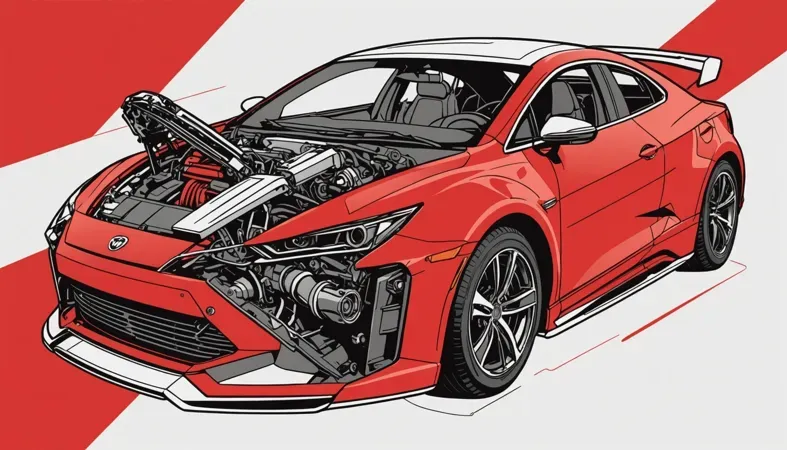
Pinch Weld Characteristics
Understanding pinch welds goes beyond just the “what” and “how.” Let’s dive into their distinct features.
Structural Benefits
- Strength: Pinch welds offer exceptional tensile strength, often reaching up to 80,000 psi (550 MPa).
- Durability: These welds withstand harsh conditions, making them ideal for automotive applications.
Material Compatibility
Pinch welds can be made on various materials, including:
- Steel
- Aluminum
- Stainless Steel
Visual Identification
You can spot a pinch weld by its unique appearance. It has a uniform, tight join typically seen along the edges of metal pieces.
Aftercare, Inspection, and Advanced Tips for Pinch Welding
Here’s practical advice on aftercare, inspection, and expert tips specific to pinch welding.
Aftercare Tips
After creating a pinch weld, let it cool naturally for about 30 minutes. Avoid rapid cooling methods like water or fans, as they can cause structural weaknesses. Clean any slag or debris with a wire brush (0.5 Inches [1.27 Cm] in Diameter) to ensure integrity and prevent corrosion. It’s crucial to always take proper safety measures, especially when dealing with potential hazards like welder’s flash. For more information, find out how to treat flash burn in eyes.
Inspection
Inspect for uniformity in flange overlaps, aiming for a consistent gap of 0.025 inches [0.635 mm]. Use a dial gauge, such as the one from Starrett, to measure the height from fusion points. Ensure all surfaces show proper fusion with no visible voids—use 10X magnification to detect hidden imperfections.
Expert Tips
Here’s a pro tip from my past projects: Use a thermal imaging camera to spot overheating issues during welding, especially with thinner materials. Maintain a gap of about 0.030 inches [0.76 mm] for the best results. In my experience, R-series rotary welders provide lower heat input, reducing distortion significantly.
Applications Of Pinch Welds
I’ve known people to use pinch welds to secure joinery in auto restorations. However, they have many applications, such as:
- Automotive Assembly: Pinch welds hold body panels in cars together. They provide strong bonds and help prevent rust, making them popular in manufacturing.
- HVAC Ductwork: In installations, pinch welds secure joints in ductwork, improving air efficiency. They’re crucial for preventing leaks and ensuring better performance.
- Shipbuilding: Maine industries use pinch welds to connect steel hulls. They increase ship durability and significantly reduce distortion from welding heat.
- Metal Furniture: Pinch welds attach casters and legs to frames, enhancing stability. They’re favored for their strength and precise fit.

Alternatives for Achieving Similar Results As Pinch Welding
There are a few alternatives that can give you similar outcomes as pinch welding. Methods like adhesive bonding, using products such as 3M’s Structural Adhesive, can seal joints quite effectively. In some cases, mechanical fastening or self-piercing rivets may work, especially when dealing with body panels on your car.
Here’s a nugget of wisdom I’ve picked up along the way: sometimes it’s better to low-profile your approach. For instance, pinch weld repair tools can be handy for quick fixes. Choices like pinch weld jack stands offer extra support, making your work both safe and effective!
Frequently Asked Questions (FAQs)
Now let us look at some common questions. I typically get asked these when it comes to pinch welds.
What is Pinch Weld Used for?
Pinch welds are used for joining two pieces of metal, often in automotive applications. They provide structural integrity and reliability in areas like car frames. The weld helps accommodate stress and vibrations, enhancing safety during operation.
Can You Jack a Car Up on the Pinch Welds?
No, you shouldn’t jack a car up on the pinch welds. Jacking on pinch welds may cause damage to the welds, leading to structural issues. Instead, use designated jacking points; it helps avoid expensive repairs down the line.
What Does a Pinch Weld Look Like?
A pinch weld looks like a seam where two metal panels meet. It’s often a narrow, raised edge, providing a rough surface for welding. This design improves adhesion when welding, ensuring durability and preventing leaks in vehicles.
What is Pinch Effect in Welding?
The pinch effect in welding refers to the force that draws molten metal together. It’s critical for maintaining a strong weld joint during the cooling process. Correctly managing this effect can enhance the overall quality of the weld.
What Are Pinch Welds on a Car?
Pinch welds on a car are seams where the body panels connect. They help reinforce the car’s structure and are important for collision safety. Understanding these welds is crucial for repairs and restorations, ensuring the vehicle’s longevity.
What Are the Benefits Of Using Pinch Welds?
Using pinch welds offers several benefits. They enhance the strength of weld joints and improve overall vehicle durability. Plus, when installed correctly, pinch welds help prevent rust and corrosion over time, saving money on repairs.
Conclusion
We are almost done. We covered what a pinch weld is, how it works, various types, steps to perform pinch welding, factors affecting welds, common problems, aftercare tips, applications, and alternatives. That’s a lot of ground!
To wrap it up, a pinch weld is a seam created, often found in car frames or metal structures, where two pieces get pressed together and fused. It’s essential for strength and alignment. Hopefully, I was able to impart some of my experience with pinch welds, and you now understand their role in welding and construction better.
For further insights and information on welding practices, feel free to visit What is Welding.
Additional Reading
- American Welding Society. (2015). AWS D1.1/D1.1M: Structural Welding Code – Steel. Miami, FL: AWS.
- Welding Institute (TWI): https://www.twi-global.com
Joe Carter is a retired welding professional with over 40 years of hands-on experience in the industry, spanning ship repair, structural welding, and even underwater projects. Joe is a master of MIG, TIG, and Stick welding. Passionate about mentoring the next generation of welders, Joe now shares his decades of expertise and practical insights to help others build rewarding careers in welding.
6010 Electrode, American Welding Society, Automotive Repair, Metal Joining, Pinch Weld, Structural Integrity, Welding, Welding Equipment, Welding Techniques

